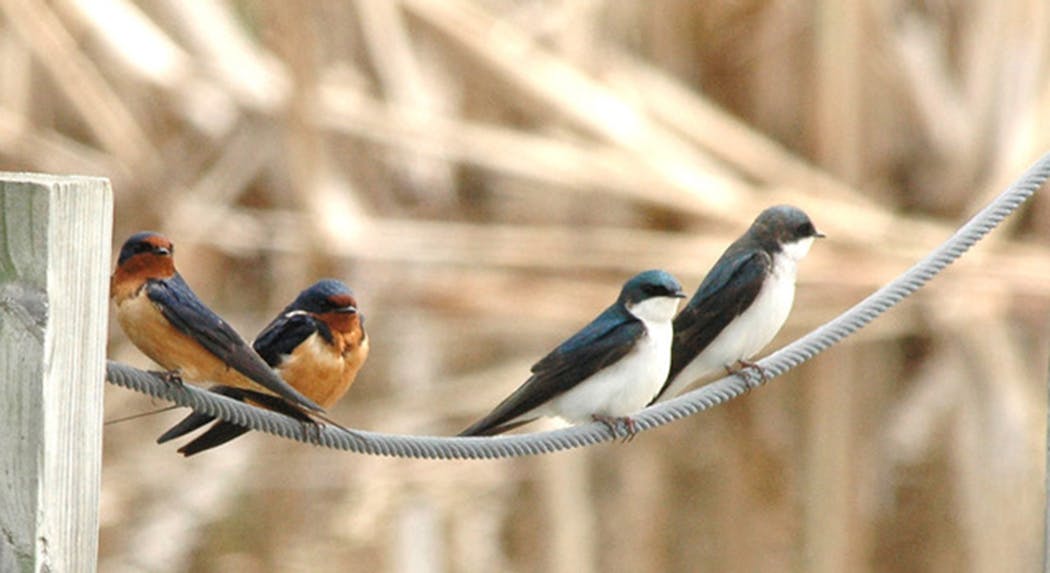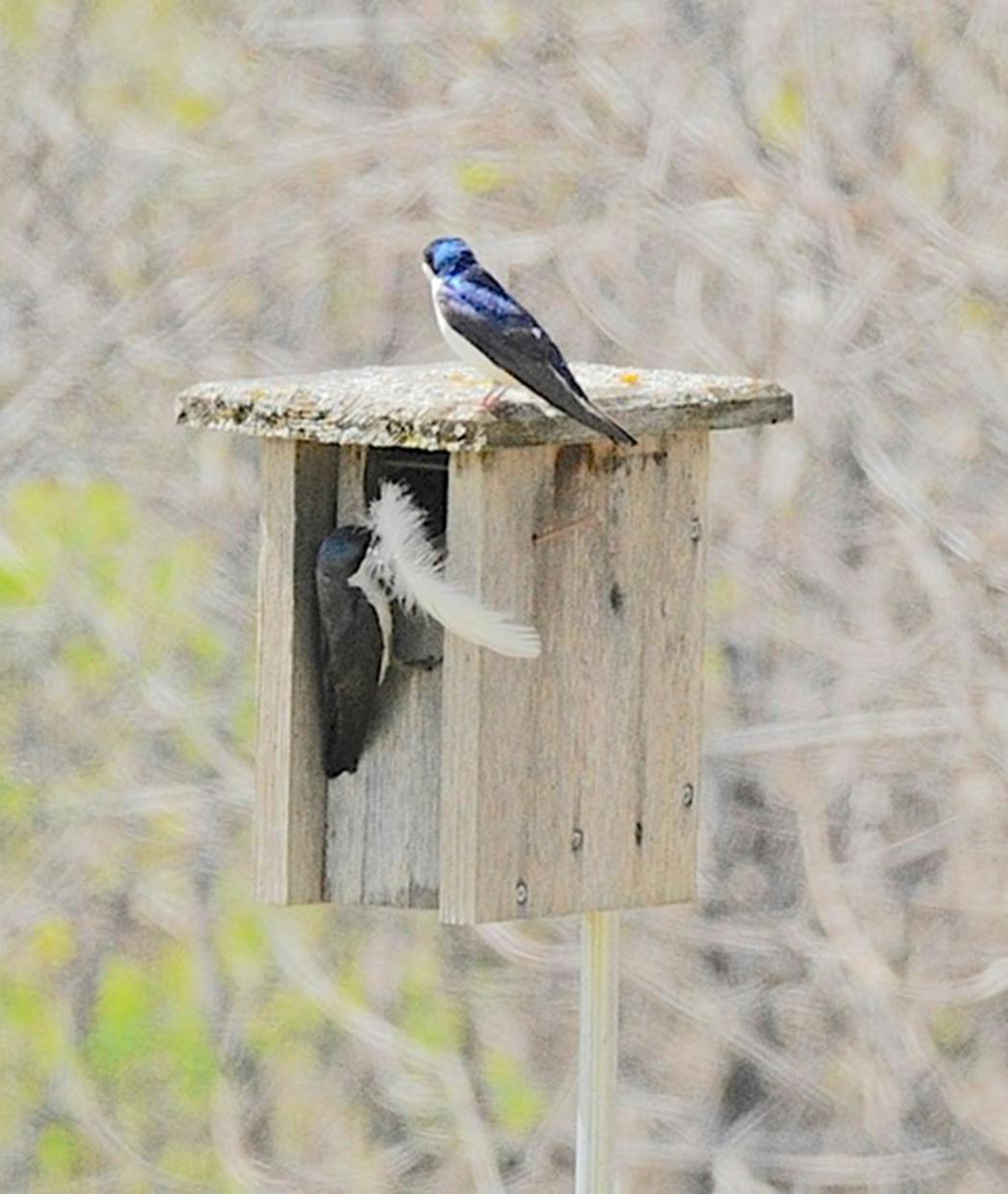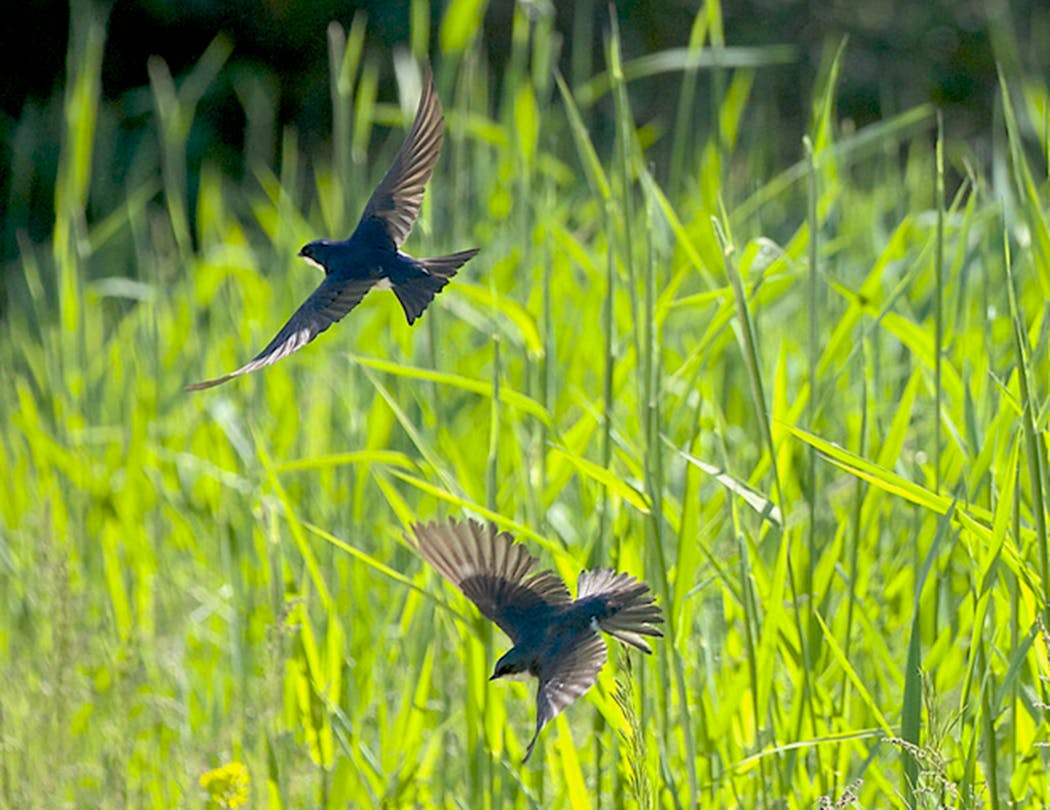Reports of migrants arriving for a new nesting season will begin to appear in about three weeks.
The Daily Bird Planner offered last year by the Minnesota Ornithologists' Union gives median (midpoint) arrival dates for all Minnesota migrant bird species.
Horned larks are already being seen, Jan. 24 being the middle of their arrival period. That means those birds can be found foraging along country roadsides and in barren fields by diligent birders. The larks usually appear in flocks.
Waterfowl fill arrival dates into March, when great blue herons and turkey vultures also will be seen.
Eastern bluebirds should be looking for clean and open boxes around March 5. Tree swallows, nest-box competitors, will be about a week behind them.
Fox sparrows and brown-headed cowbirds have a median date of March 11, woodcocks March 12.
The list of arrivals grows quickly from that point, gull and raptor species arriving day by day. Expect meadowlarks, some blackbirds, winter wrens and Eastern phoebes in mid-March.
Shorebirds begin arrivals later in March. Passerine species — songbirds — will open the year for many birders in and around mid-April. By late April and into mid-May many of our colorful resident and migrant species will arrive.
The median date for Baltimore orioles is April 28, the 29th the mid-point for rose-breasted grosbeaks. Expect ruby-throated hummingbirds around May 1.
Common loons' mid-arrival point is March 23. Open water in the metro area should offer early viewing opportunities.
Millions of birders
When all those birds arrive, there will be plenty of people watching for them. Birding is enjoyed by more than 35% of the U.S. population age 16 or older, according to a 2023 survey by the U.S. Fish and Wildlife Service.
The survey found an estimated 96 million of us who watched, fed or photographed birds, visited public parks to see birds, or maintained bird-friendly landscaping around the home. Survey questions concerned activity in 2022.
Wildlife watching in general attracted 148.3 million people, according to the survey. Most people participated at home.
COVID confinement probably should be given credit for stimulating some of that activity.
As a group, wildlife watchers spent over $250 billion in pursuit of their interests. Birds were cited as a major spending focus.
Participation in programs and birding aids offered by the Cornell Lab of Ornithology offer another look at birding participants.
Merlin, the bird identification app for cellphones, was being used by 1.5 million birders when measured last March. That represents a 500% increase since introduction of the app in 2020.
The eBird database is another indication of the growing interest in birding. Powered by another free mobile phone app, eBird data "document bird distribution, abundance, habitat use and trends through checklist data collected within a simple, scientific framework," according to Cornell.
"Birders enter when, where and how they went birding, and then fill out a checklist of all the birds seen and heard during the outing," Cornell says. The system works worldwide. (ebird.org/about).
More than 100 million eBird reports are received annually, according to Cornell. Use of the system is growing 20% annually. The information collected helps ornithologists in many ways, including species distribution.
A daily summary of eBird reports for Minnesota is available by email subscription (ebird.org/alert/summary?sid=SN35607).
Lifelong birder Jim Williams can be reached at woodduck38@gmail.com.

The 5 best things our food writers ate this week

A Minnesota field guide to snow shovels: Which one's best?

Summer Camp Guide: Find your best ones here

Lowertown St. Paul losing another restaurant as Dark Horse announces closing





